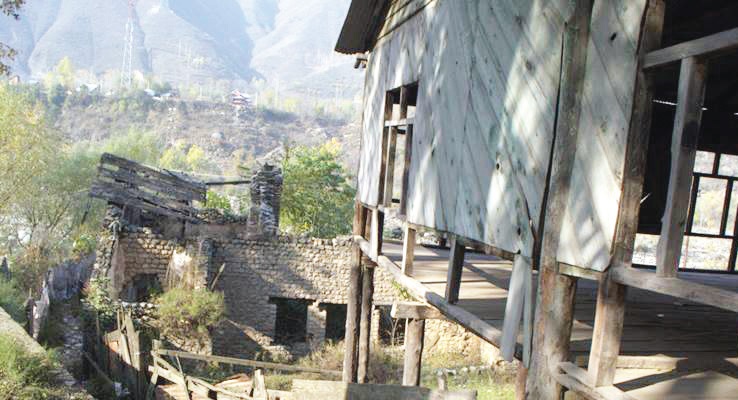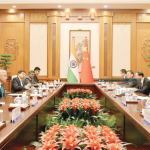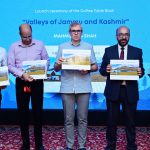Kashmir’s first Hydro Electric Project (HEP) was established in 1902 along the banks of the Jhelum River in Mohra village, located in the Baramulla district of north Kashmir.
This pioneering project was commissioned by Maharaja Ranbir Singh, who enlisted the expertise of British engineer Major Dlain de Latbiniere. De Latbiniere had previously worked on a similar project in Mysore, making him a valuable asset for the ambitious venture in Kashmir.
Regarded as one of the oldest hydroelectric power plants in South Asia, the Mohra project began generating 3.75 megawatts of electricity upon its completion. This marked a significant achievement in the region’s modernization efforts during the early 20th century, setting the stage for further technological advancements in the years that followed.
The electricity generated from the Mohra Hydro Electric Project was initially used to power dredgers in Sopore, helping reclaim 60,000 acres of flood-affected cultivable land. Surplus electricity was directed to run the world-renowned silk factory in Srinagar, further boosting the region’s economy.
However, the plant faced multiple setbacks over the years. In 1959, it was severely damaged by floods but was subsequently repaired. Despite these repairs, the plant’s capacity was significantly reduced from 9 MW to 2.5 MW following machinery failures. It continued to operate at this reduced capacity until 1992.
In 1992, another devastating flood severely damaged the powerhouse, and it ceased to function. Despite various efforts by successive government regimes to revive the project, no substantial progress has been made, and it remains defunct to this day.
The water conductor for the Mohra Hydro Electric Project spans an impressive 10.35 km, with 7.5 km of it constructed from wood, while the remainder consists of six small masonry tunnels and four cut-and-cover conduits. This canal traverses the mountainous terrain, extending from Rampur Boniyar village to Mahura village in Baramulla.
To construct this unique canal, Maharaja Ranbir Singh employed skilled workers from regions like Punjab, Afghanistan, and Baltistan. The wooden flume successfully carried 200 cusecs of water, which powered the turbines at Mohra, driving the entire operation.
In recognition of its historical significance and unique design, the Mohra Hydro Electric Project won an award in December 2015 under the ‘Unique Project’ category at the 5th India Power Awards in New Delhi. The Power Development Corporation was honored for its pioneering work in hydroelectric project construction in Jammu & Kashmir.
Today, the wooden canal remains a significant attraction for travelers on the Baramulla-Uri highway, drawing attention not only for its historical value but also for its remarkable engineering. The canal is an enduring symbol of the early efforts in hydroelectric power generation in Kashmir, showcasing a blend of innovation and craftsmanship.
Historians believe the base of the artificial canal was constructed using concrete, while the 8.5-foot-high portion was made from timber, as the region had ample forest resources at the time. The canal was designed to carry water from Rampur to Mohra, a journey spanning about 6.5 miles, to power turbines that generated electricity.
Over time, the canal has deteriorated, having far exceeded its expected lifespan. In some areas, it has been filled with mud and silt, making parts of it barely recognizable. Last year, a fire in Boniyar village damaged a section of the wooden structure, further weakening its integrity.
Zubair Ahmad Thoker, Assistant Professor of History at Government Boys Degree College, Baramulla, explains that the Mohra Hydro Electric Project, established more than 100 years ago, is considered one of the oldest power projects in Asia.
He highlights that the project originally supplied electricity to significant locations, including the Maharaja’s palace and the famous silk factory in Srinagar.
The water canal had the capacity to carry 200 cubic feet of water to power the turbines, with the generator and water wheel supplied by notable companies: General Electric from New York and Abner Doble from San Francisco.
However, the project has been defunct for the past 30 years, leaving behind a rich historical legacy but also a missed opportunity for revival. Thoker says that the site holds great potential as a tourist destination, with its historical significance and engineering marvel appealing to visitors and historians alike.
Meanwhile Mohra Hydroelectric Project in Uri, North Kashmir, holds significant historical and engineering value. Constructed in 1902, it was one of the earliest hydroelectric plants in South Asia. Initially generating 3.75 MW, its capacity was later expanded to 9 MW in 1962. The project, including its iconic 11-km-long wooden flume, was severely damaged over the years, particularly by floods in 1992, which rendered it defunct.
Despite efforts to revive the plant over the years, including the preparation of a Detailed Project Report (DPR) in 2015, the project faced multiple hurdles, including water supply issues. However, recent progress has been made, with the National Hydroelectric Power Corporation (NHPC) agreeing to release water, paving the way for restoration. The project is now expected to be restored by the end of the year, marking a significant milestone after more than two decades of stagnation








